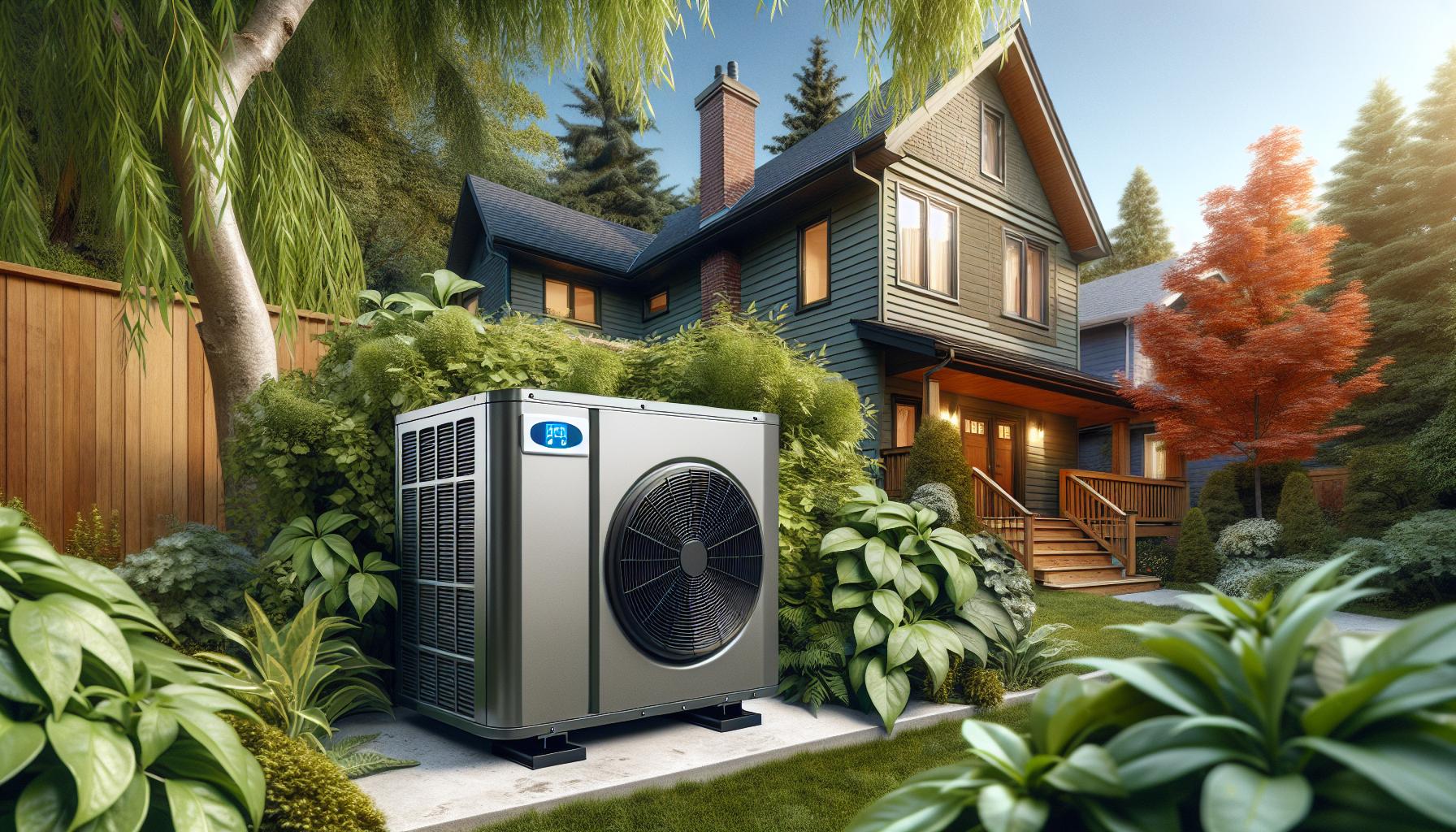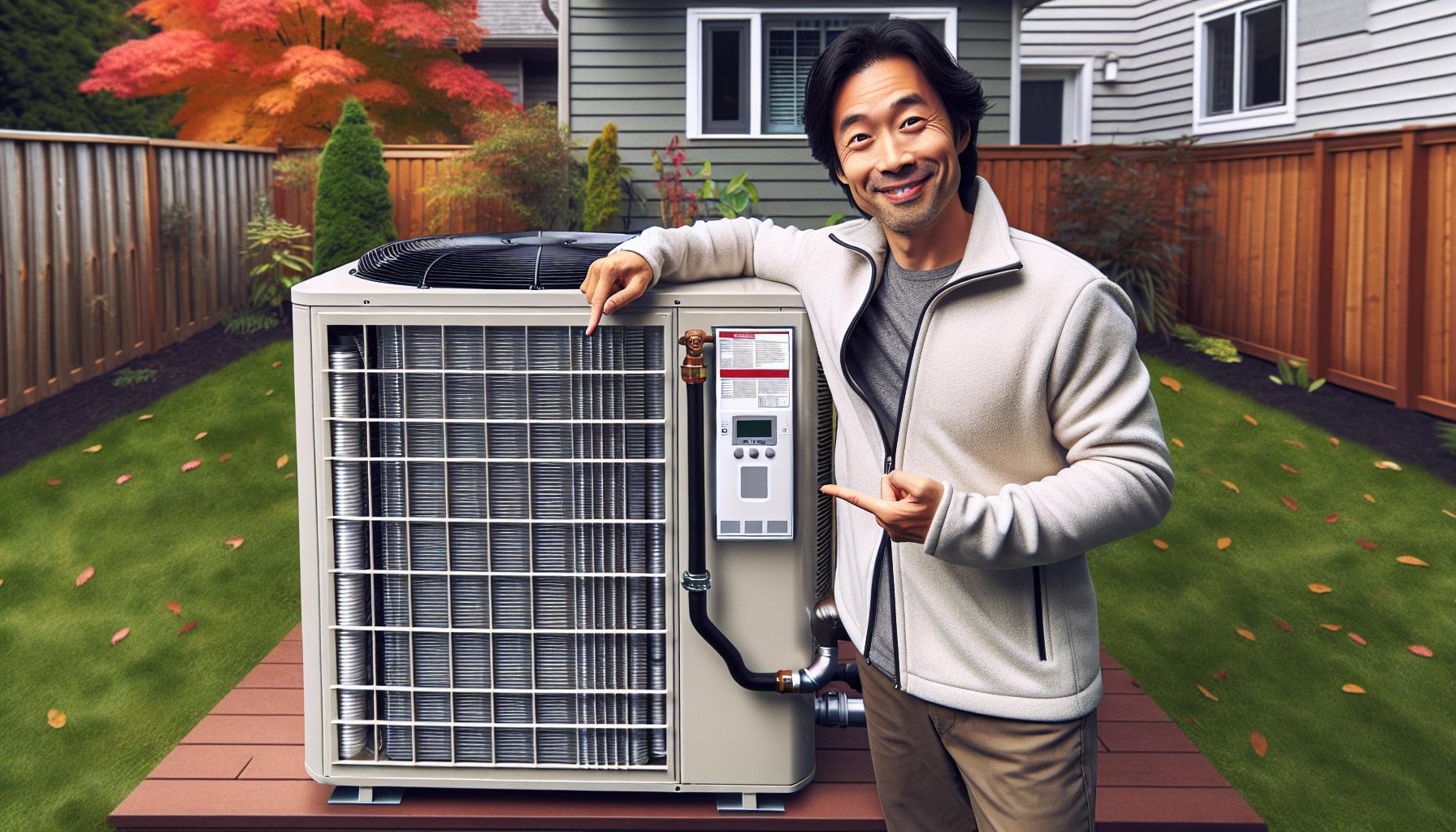Are you considering replacing your old furnace with a heat pump? As energy efficiency becomes increasingly crucial, more homeowners are exploring this eco-friendly alternative. Heat pumps not only reduce your carbon footprint but also offer substantial savings on energy bills.
In this text, you’ll discover why a heat pump might be the ideal solution for your home. We’ll investigate into the benefits, such as improved efficiency and lower maintenance costs, and compare them with traditional furnaces. By the end, you’ll have a clear understanding of whether making the switch aligns with your needs and environmental goals.
Switching to a heat pump isn’t just about cost savings—it’s a step towards a greener future. Let’s explore how this modern technology can transform your home’s heating system and contribute to a more sustainable lifestyle.
Understanding Heat Pumps
Heat pumps transfer heat from one place to another, making them more efficient than furnaces. Unlike traditional heating systems that generate heat, heat pumps move heat using refrigerant and a compressor. This results in significant energy savings, especially in moderate climates.
Types of Heat Pumps
- Air Source Heat Pumps: These are the most common and work by transferring heat between your home and the outside air. They are effective in a variety of climates but may struggle in extreme cold.
- Ground Source Heat Pumps: Also known as geothermal heat pumps, these systems transfer heat between your home and the ground. They offer higher efficiency but come with a higher installation cost.
- Water Source Heat Pumps: These systems transfer heat between your home and a water source. They are less common and usually used in specific situations like homes near lakes.
Efficiency and Performance
Heat pumps have a higher Seasonal Energy Efficiency Ratio (SEER) compared to traditional furnaces. For instance, a heat pump with a SEER rating of 20 is more efficient than a furnace with a SEER of 15. This means lower energy bills and reduced environmental impact.
Installation Considerations
When replacing a furnace with a heat pump, ensure your existing ductwork is compatible. If not, additional costs for modifications or new ductwork may arise. You might also need a backup heating source in extremely cold climates to ensure consistent performance.
Year-Round Comfort
Heat pumps provide both heating and cooling, eliminating the need for separate systems. This dual functionality makes them a versatile solution for maintaining optimal indoor temperatures throughout the year.
Environmental Impact
By using electricity instead of fossil fuels, heat pumps reduce carbon emissions. This makes them a more eco-friendly option compared to traditional furnaces. Also, many heat pumps use refrigerants with lower Global Warming Potential (GWP), further reducing their environmental footprint.
Cost-Effectiveness
Although the initial cost of a heat pump can be higher than a furnace, the long-term savings on energy bills often offset this. Over time, you might find that a heat pump offers better value for money due to its efficiency and dual functionality.
Benefits Of Replacing A Furnace With A Heat Pump

Switching from a traditional furnace to a heat pump offers numerous advantages. This section covers the key benefits, focusing on energy efficiency, cost savings, and environmental impact.
Energy Efficiency
Heat pumps are highly efficient. They transfer heat instead of generating it, leading to significant energy savings. With a high Heating Seasonal Performance Factor (HSPF), they outperform furnaces with low Annual Fuel Utilization Efficiency (AFUE) ratings. Also, heat pumps provide both heating and cooling, ensuring year-round efficiency.
Cost Savings
Heat pumps can cut your energy bills by up to 50% compared to traditional furnaces, especially in milder climates. The initial investment may be higher, but the long-term savings on energy expenses make it a cost-effective choice. Many households report substantial reductions in their monthly utility costs.
Environmental Impact
Heat pumps use electricity instead of fossil fuels, reducing carbon emissions. They also employ refrigerants with a lower Global Warming Potential, making them a more eco-friendly option. By choosing a heat pump, you’re contributing to a more sustainable future and reducing your carbon footprint.
Types Of Heat Pumps
Heat pumps provide an energy-efficient alternative to traditional furnaces. They offer various options tailored to different needs.
Air Source Heat Pumps
Air source heat pumps transfer heat from outside air to your home in winter and reverse the process to cool in summer. They are energy-efficient since they transfer heat rather than generate it. Installation is simpler as they don’t require digging. Costs range from $3,200 to $5,800, offset by long-term savings.
Ground Source Heat Pumps
Ground source heat pumps, also known as geothermal, transfer heat from the ground to your home. They are more efficient than air source pumps but involve higher installation costs due to the need for digging and ground loops. Initial costs can be between $10,000 and $18,000, but offer substantial long-term savings and higher efficiency.
Installation Process
Replacing a furnace with a heat pump involves several critical steps to ensure optimal performance. Focus on assessment, system selection, and professional installation.
Assessment And Planning
Evaluate your home’s climate suitability and existing infrastructure. Moderate climates suit heat pumps. Ensure your ductwork is compatible and inspect home insulation to prevent heat loss.
Choosing The Right System
Select the appropriate heat pump type based on your needs. Air source heat pumps suit milder climates, while ground source systems are more efficient but costly. Consider the long-term savings of each option.
Professional Installation
Hire a certified technician for installation. They’ll verify ductwork compatibility, ensure proper insulation, and connect the system efficiently. Professional installation guarantees optimal performance and longevity.
Cost Considerations
Switching from a furnace to a heat pump involves several financial factors. Understanding these costs helps you make an well-informed choice and ensures your investment aligns with both your budget and long-term savings goals.
Initial Investment
Installing a heat pump costs between $3,500 and $6,500, with a national average of $5,000. In some areas, like the Northwest, costs can reach $10,000. New ductwork adds $2,500 to $6,000. Upgrading your electrical panel might add an additional $4,000.
Long-term Savings
Heat pumps offer significant savings over time. They can reduce energy bills by up to 50% compared to traditional furnaces. This efficiency, along with lower maintenance costs, makes heat pumps a financially smart, long-term investment.
Common Misconceptions
Misconception: Heat Pumps Cannot Handle Cold Climates
Heat pumps can be effective in cold climates with proper installation and configuration. In extremely cold regions, combining a heat pump with a furnace in a dual-fuel system ensures adequate heating. This setup uses the heat pump for milder weather and the furnace during very cold periods, providing efficient heating year-round.
Misconception: Heat Pumps Are Not Energy-Efficient
Heat pumps are generally more energy-efficient than traditional furnaces, especially in moderate climates. They transfer heat rather than generate it, leading to significant savings on energy bills. High-efficiency heat pumps can deliver 1.5 to 3 times more heat energy than the electrical energy they consume, making them a cost-effective choice for many homeowners.
Conclusion
Switching from a traditional furnace to a heat pump is a smart move for those looking to cut energy costs and reduce their carbon footprint. Heat pumps offer year-round comfort by providing both heating and cooling, making them a versatile solution for your home. While the initial investment may be higher, the long-term savings and environmental benefits make it a worthwhile choice.
By assessing your climate, existing infrastructure, and financial considerations, you can ensure a smooth transition to a heat pump system. Choosing the right type and hiring a certified technician for installation will maximise efficiency and performance. Make the switch today and enjoy a more sustainable and cost-effective future.





